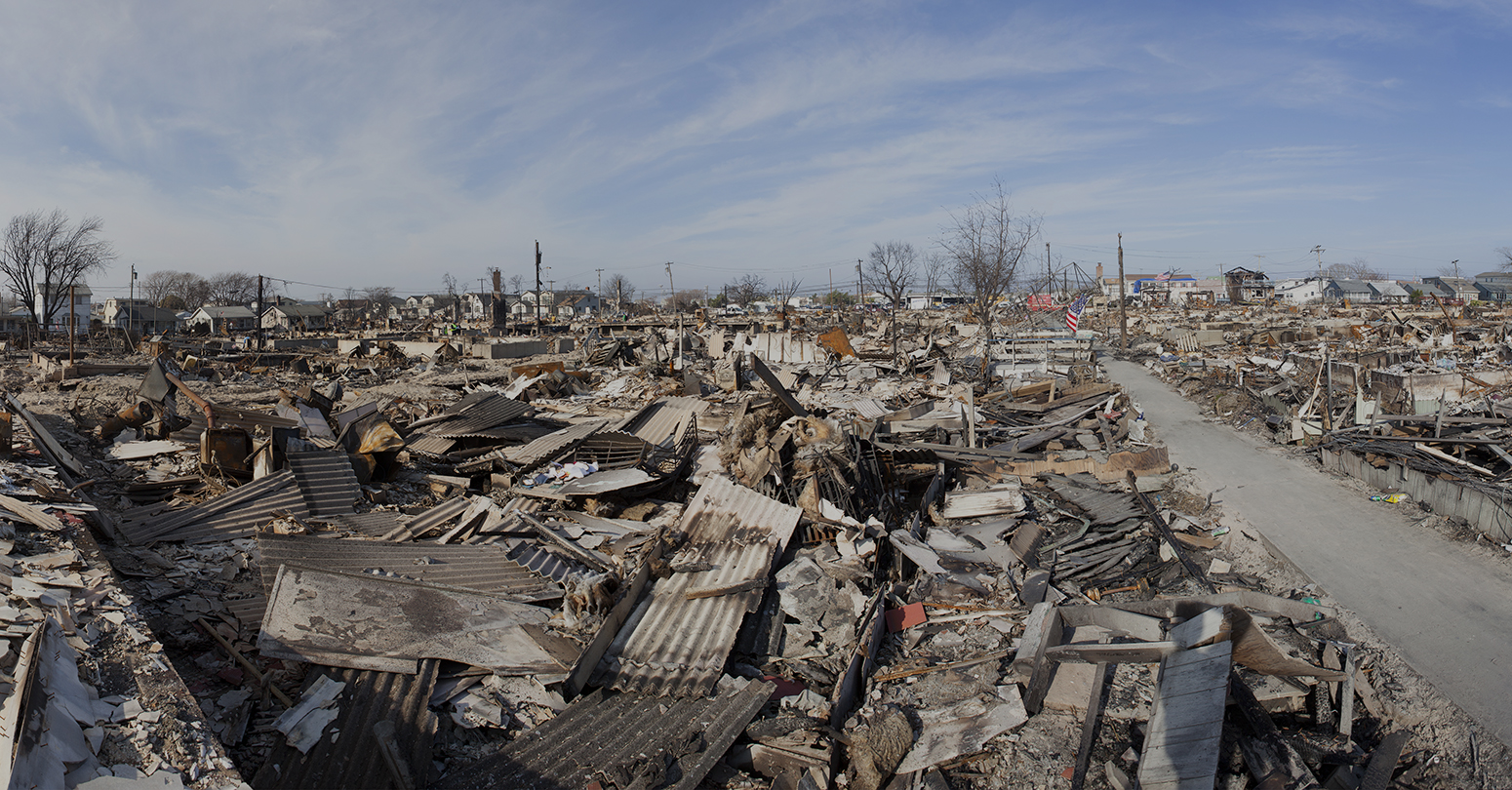
THE CITY
Seven years after Superstorm Sandy deluged New York City, more than eight out of 10 properties in coastal areas the federal government deems extremely vulnerable to the next disaster are without flood insurance, an investigation by THE CITY found.
Meanwhile, the number of flood insurance policies protecting New Yorkers has dropped markedly since the end of 2013 in two of the boroughs hardest hit by the storm: Staten Island, which saw an 18% decline, and Queens, which experienced an 8% decrease.
Residents of roughly 250,000 houses and apartments within red-flagged flood zones are left exposed — thanks to the high cost of insurance policies and a protracted disagreement between local and federal officials.
City and Washington bureaucrats are at least five years away from forging a common set of flood maps that will determine who must buy insurance — leaving New Yorkers reliant on risk ratings little changed since the 1980s.
Mayor Bill de Blasio is disputing the map the Federal Emergency Management Agency (FEMA) created in 2015, which significantly expanded areas identified for high risk of flooding, based on Sandy’s path of destruction.
So for now, only property owners with federally backed mortgages who are living within the old, pre-Sandy zone — last updated by FEMA in 2007 — are required to purchase flood insurance.
Homeowners end up mired in confusion over seemingly contradictory rules: In some cases, people whose properties were devastated by Sandy are living without flood insurance while new or rebuilt homes next door must be made floodproof.
As it all gets sorted out, many homeowners are rolling the dice — skipping often-pricey flood insurance and praying another storm doesn’t send the waters of New York Harbor, Jamaica Bay or Buttermilk Channel barrelling into their living rooms.
“I know the danger. Trust me, I know,” said Semyon Krugolets, 66, a retired cabinet maker whose Staten Island home took on two feet of water during Sandy. “But sometimes you have to make these decisions.”
THE CITY
In
March 2015, Mayor Bill de Blasio trekked to Brooklyn’s Red Hook Houses
to announce what he dubbed the biggest single Federal Emergency
Management Agency grant in history: $3 billion to rebuild and upgrade
city public housing developments slammed by Superstorm Sandy in 2012.
He
declared construction would begin right away in NYCHA complexes still
reeling from the storm that left more than 80,000 tenants without
electricity, heat and elevators for weeks — making some residents
virtual prisoners in their homes.
But
a review by THE CITY found that seven years after Sandy damaged 200
buildings in 35 developments along waterfronts from Red Hook to the
Rockaways to the Lower East Side, work has been completed in just two
complexes, with a third development nearly done.
And
while the mayor pledged that the federal money would be used to
stormproof entire NYCHA developments slammed by Sandy, his promise
proved premature: FEMA ultimately agreed to pay only for specific
buildings battered when the superstorm hit on Oct. 29, 2012.
Meanwhile,
records show city investigators flagged an alarming spike in costs at
one NYCHA Sandy rebuild project at the very site where the mayor
announced the FEMA grant: the Red Hook Houses.
A
vendor’s project proposal jumped from $89,000 to more than $500,000 —
and a manager told investigators this happened because de Blasio was
pressuring them to get the job done faster, according to a city
Department of Investigation report.
Among the findings of THE CITY’s review:
•
Construction projects at 31 of the 35 damaged developments missed their
original start dates, in some cases by a few months, but in most
instances by a year or more. Work at the Lower East Side’s Riis Houses,
for example, was scheduled to begin in the fall of 2015 but didn’t start
until six months ago.
•
The FEMA-funded fixup has been completed at only two NYCHA
developments: Lower East Side Rehab and Ocean Bay (Oceanside) in the
Rockaways. Work at Harlem’s Rangel Houses is 99% complete, while NYCHA
just awarded a contract for the Lincoln Houses in East Harlem. The rest
are now under construction, including seven that NYCHA promised will
wrap up by year’s end.
•
Records show NYCHA hired one contractor later caught cheating workers
on wages, another that ended up barred from doing city school
construction, and another arrested on charges of stealing heating oil
from a competitor when he had an emergency Sandy contract selling
heating oil to NYCHA.




3 comments:
And this is why you shouldn’t be shocked or surprised when the Feds are slow to send money to NY. Be it Sandy relief, 9-11 funds, or infrastructure projects. The funds just disappear and nothing gets done.
They're acting just like insurance companies playing the probability game. There probably won't be another super storm in their lifetimes, they figure. Even if you had flood insurance during sandy, the devastation was so catastrophic insurance companies couldn't completely cover the damage.
I worked at Build it Back - the employees were there to hang out, glad hand, eat huge delivered lunches on the City's dime and were extremely hostile to those applying for the help.
It was sickening to observe. They worked maybe 2 hours each day, if that.
Post a Comment